Enhancing Pullulan Soft Capsules with a Mixture of Glycerol and Sorbitol Plasticizers: A Multi-Dimensional Study
Abstract
1. Introduction
2. Experimental
2.1. Materials
2.2. Solution Preparation
2.3. Casting Film Preparation
2.4. Soft Capsule Preparation
2.5. Characterization
2.5.1. Mechanical Properties of Films
2.5.2. Water Vapor Permeability of Films
2.5.3. Moisture Sorption Tests of Films
2.5.4. Thermogravimetric Analysis
2.5.5. Fourier Transforms Infrared Spectroscopy (FTIR)
2.5.6. X-ray Diffraction (XRD)
2.5.7. Scanning Electron Microscopy (SEM)
2.5.8. Analysis of Disintegration of Soft Capsules
2.5.9. The Brittleness Test of Soft Capsule
3. Results and Discussion
3.1. Effect on Mechanical Properties of Pullulan Soft Film
3.2. Effects on Water Vapor Transmittance and Moisture Absorption of Pullulan Soft Film
3.3. Effects on Thermal Properties of Pullulan Soft Film
3.4. Fourier Transform Infrared Spectroscopy Analysis
3.5. X-ray Diffraction Analysis
3.6. Scanning Electron Microscopy
3.7. Effects on Pullulan Soft Capsule Performance
4. Conclusions
Author Contributions
Funding
Institutional Review Board Statement
Informed Consent Statement
Data Availability Statement
Acknowledgments
Conflicts of Interest
References
- Gullapalli, R.P.; Mazzitelli, C.L. Gelatin and non-gelatin capsule dosage forms. J. Pharm. Sci. 2017, 106, 1453–1465. [Google Scholar] [CrossRef] [PubMed]
- Gullapalli, R.P. Soft gelatin capsules (softgels). J. Pharm. Sci. 2010, 99, 4107–4148. [Google Scholar] [CrossRef] [PubMed]
- Al-Tabakha, M.M. Hpmc capsules: Current status and future prospects. J. Pharm. Pharm. Sci. 2010, 13, 428–442. [Google Scholar] [CrossRef] [PubMed]
- Fauzi, M.; Pudjiastuti, P. Preparation, properties and potential of carrageenan-based hard capsules for replacing gelatine: A review. Polymers 2021, 13, 2666. [Google Scholar] [CrossRef]
- Demchenko, D.V.; Pozharitskaya, O.N. Rheological study of agar hydrogels for soft capsule shells. Pharm. Chem. J. 2014, 47, 556–558. [Google Scholar] [CrossRef]
- Fakharian, M.H.; Tamimi, N. Effects of κ-carrageenan on rheological properties of dually modified sago starch: Towards finding gelatin alternative for hard capsules. Carbohydr. Polym. 2015, 132, 156–163. [Google Scholar] [CrossRef] [PubMed]
- He, H.; Ye, J. κ-carrageenan/locust bean gum as hard capsule gelling agents. Carbohydr. Polym. 2017, 175, 417–424. [Google Scholar] [CrossRef]
- Zhang, L.; Wang, Y. Developing hydroxypropyl methylcellulose/hydroxypropyl starch blends for use as capsule materials. Carbohydr. Polym. 2013, 98, 73–79. [Google Scholar] [CrossRef]
- Ding, Y.; Jiang, F. An alternative hard capsule prepared with the high molecular weight pullulan and gellan: Processing, characterization, and in vitro drug release. Carbohydr. Polym. 2020, 237, 116172. [Google Scholar] [CrossRef]
- Ock, S.Y.; Lim, W.S. Physical and mechanical properties of plant-derived soft-shell capsules formulated with hydroxypropyl starches from different botanical sources. Polym. Test 2020, 91, 106871. [Google Scholar] [CrossRef]
- Chen, Q.; Zong, Z. Preparation and characterization of nanostarch-based green hard capsules reinforced by cellulose nanocrystals. Int. J. Biol. Macromol. 2021, 167, 1241–1247. [Google Scholar] [CrossRef] [PubMed]
- Chen, Y.; Zhao, H. Tempo-oxidized konjac glucomannan as appliance for the preparation of hard capsules. Carbohydr. Polym. 2016, 143, 262–269. [Google Scholar] [CrossRef] [PubMed]
- Kong, Q.; Wang, X. Preparation of millimeter-sized chitosan/carboxymethyl cellulose hollow capsule and its dye adsorption properties. Carbohydr. Polym. 2020, 244, 116481. [Google Scholar] [CrossRef] [PubMed]
- Zhang, Y.; Zhao, Q. Preparation of green and gelatin-free nanocrystalline cellulose capsules. Carbohydr. Polym. 2017, 164, 358–363. [Google Scholar] [CrossRef] [PubMed]
- Yang, N.; Chen, H. Moisture sorption and desorption properties of gelatin, hpmc and pullulan hard capsules. Int. J. Biol. Macromol. 2020, 159, 659–666. [Google Scholar] [CrossRef] [PubMed]
- Ramli, N.A.; Adam, F. Evaluation of mechanical and thermal properties of carrageenan/hydroxypropyl methyl cellulose hard capsule. Can. J. Chem. Eng. 2022, 101, 1219–1234. [Google Scholar] [CrossRef]
- Singh, R.S.; Kaur, N. Pullulan: A novel molecule for biomedical applications. Carbohydr. Polym. 2017, 171, 102–121. [Google Scholar] [CrossRef]
- Singh, R.S.; Kaur, N. Pullulan in biomedical research and development—A review. Int. J. Biol. Macromol. 2021, 166, 694–706. [Google Scholar] [CrossRef]
- Tong, Q.; Xiao, Q. Effects of glycerol, sorbitol, xylitol and fructose plasticisers on mechanical and moisture barrier properties of pullulan–alginate–carboxymethylcellulose blend films. Int. J. Food Sci. Technol. 2013, 48, 870–878. [Google Scholar] [CrossRef]
- Chen, C.T.; Chen, K.I. Improvement on physical properties of pullulan films by novel cross-linking strategy. J. Food Sci. 2017, 82, 108–117. [Google Scholar] [CrossRef]
- Ballesteros-Mártinez, L.; Pérez-Cervera, C. Effect of glycerol and sorbitol concentrations on mechanical, optical, and barrier properties of sweet potato starch film. NFS J. 2020, 20, 1–9. [Google Scholar] [CrossRef]
- Cao, L.; Liu, W. Developing a green and edible film from cassia gum: The effects of glycerol and sorbitol. J. Clean Prod. 2018, 175, 276–282. [Google Scholar] [CrossRef]
- Gao, W.; Liu, P. The co-plasticization effects of glycerol and small molecular sugars on starch-based nanocomposite films prepared by extrusion blowing. Int. J. Biol. Macromol. 2019, 133, 1175–1181. [Google Scholar] [CrossRef]
- Vieira, M.G.A.; Da Silva, M.A. Natural-based plasticizers and biopolymer films: A review. Eur. Polym. J. 2011, 47, 254–263. [Google Scholar] [CrossRef]
- Suderman, N.; Isa, M.I.N. The effect of plasticizers on the functional properties of biodegradable gelatin-based film: A review. Food Biosci. 2018, 24, 111–119. [Google Scholar] [CrossRef]
- Vuddanda, P.R.; Montenegro-Nicolini, M. Effect of plasticizers on the physico-mechanical properties of pullulan based pharmaceutical oral films. Eur. J. Pharm. Sci. 2017, 96, 290–298. [Google Scholar] [CrossRef]
- Farhan, A.; Hani, N.M. Characterization of edible packaging films based on semi-refined kappa-carrageenan plasticized with glycerol and sorbitol. Food Hydrocoll. 2017, 64, 48–58. [Google Scholar] [CrossRef]
- Gheribi, R.; Puchot, L. Development of plasticized edible films from opuntia ficus-indica mucilage: A comparative study of various polyol plasticizers. Carbohydr. Polym. 2018, 190, 204–211. [Google Scholar] [CrossRef]
- Hazrol, M.D.; Sapuan, S.M. Corn starch (Zea mays) biopolymer plastic reaction in combination with sorbitol and glycerol. Polymers 2021, 13, 242. [Google Scholar] [CrossRef]
- Hazrati, K.Z.; Sapuan, S.M. Effect of plasticizers on physical, thermal, and tensile properties of thermoplastic films based on dioscorea hispida starch. Int. J. Biol. Macromol. 2021, 185, 219–228. [Google Scholar] [CrossRef]
- Zheng, K.; Xiao, S. Chitosan-acorn starch-eugenol edible film: Physico-chemical, barrier, antimicrobial, antioxidant and structural properties. Int. J. Biol. Macromol. 2019, 135, 344–352. [Google Scholar] [CrossRef]
- Lim, W.S.; Ock, S.Y. Heat-sealing property of cassava starch film plasticized with glycerol and sorbitol. Food Packag. Shelf Life 2020, 26, 100556. [Google Scholar] [CrossRef]
- Sanyang, M.L.; Sapuan, S.M. Effect of plasticizer type and concentration on physical properties of biodegradable films based on sugar palm (arenga pinnata) starch for food packaging. J. Food Sci. Technol. 2016, 53, 326–336. [Google Scholar] [CrossRef] [PubMed]
- Zhang, Y.; Yang, N. Effects of κ-carrageenan on pullulan’s rheological and texture properties as well as pullulan hard capsule performances. Carbohydr. Polym. 2020, 238, 116190. [Google Scholar] [CrossRef] [PubMed]
- Abera, G.; Woldeyes, B. The effect of plasticizers on thermoplastic starch films developed from the indigenous ethiopian tuber crop anchote (Coccinia abyssinica) starch. Int. J. Biol. Macromol. 2020, 155, 581–587. [Google Scholar] [CrossRef]
- Balasubramanian, R.; Kim, S.S. Novel synergistic transparent k-carrageenan/xanthan gum/gellan gum hydrogel film: Mechanical, thermal and water barrier properties. Int. J. Biol. Macromol. 2018, 118 Pt A, 561–568. [Google Scholar] [CrossRef]
- Sun, G.; Liang, T. Rheological behaviors and physical properties of plasticized hydrogel films developed from κ-carrageenan incorporating hydroxypropyl methylcellulose. Food Hydrocoll. 2018, 85, 61–68. [Google Scholar] [CrossRef]
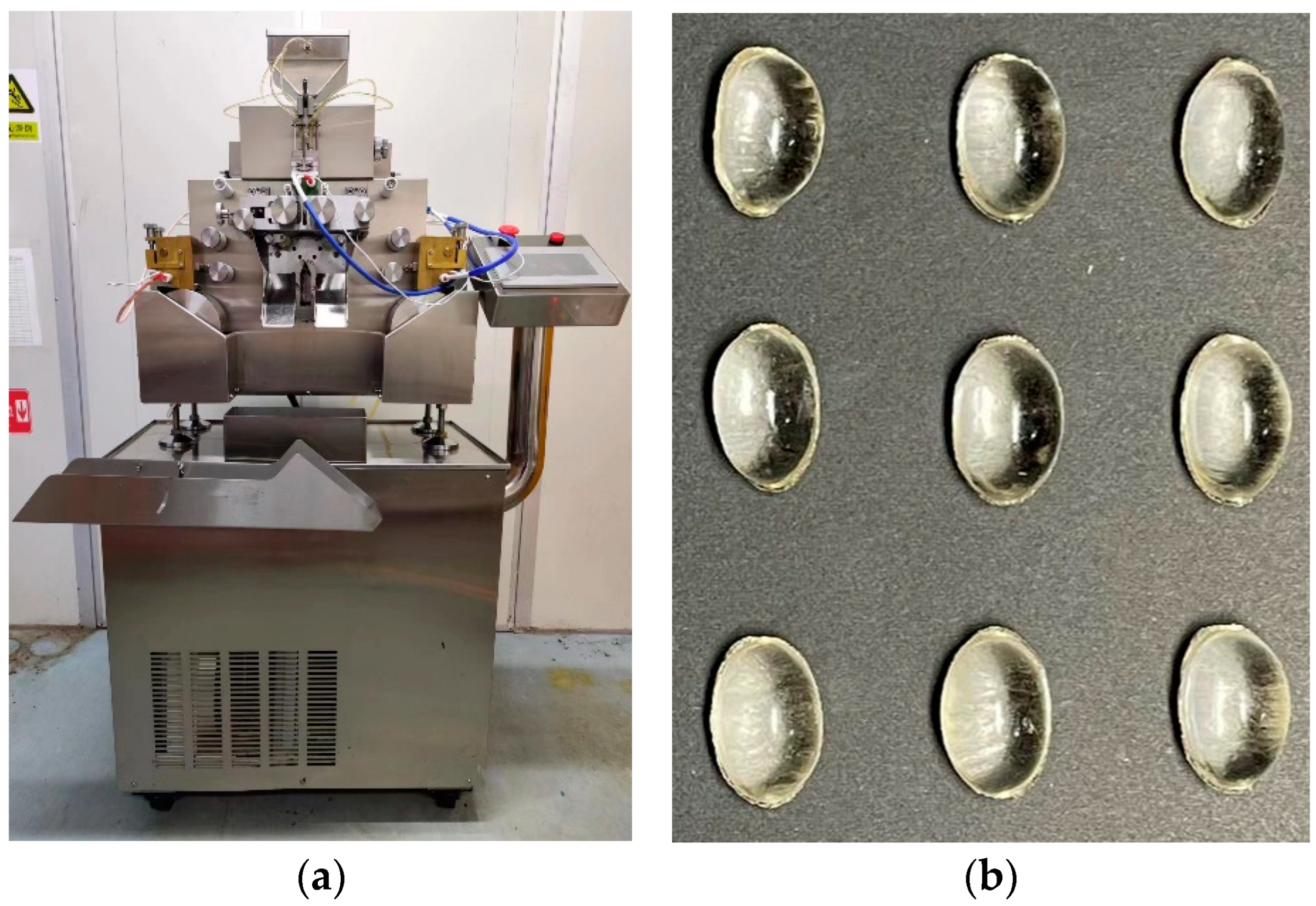
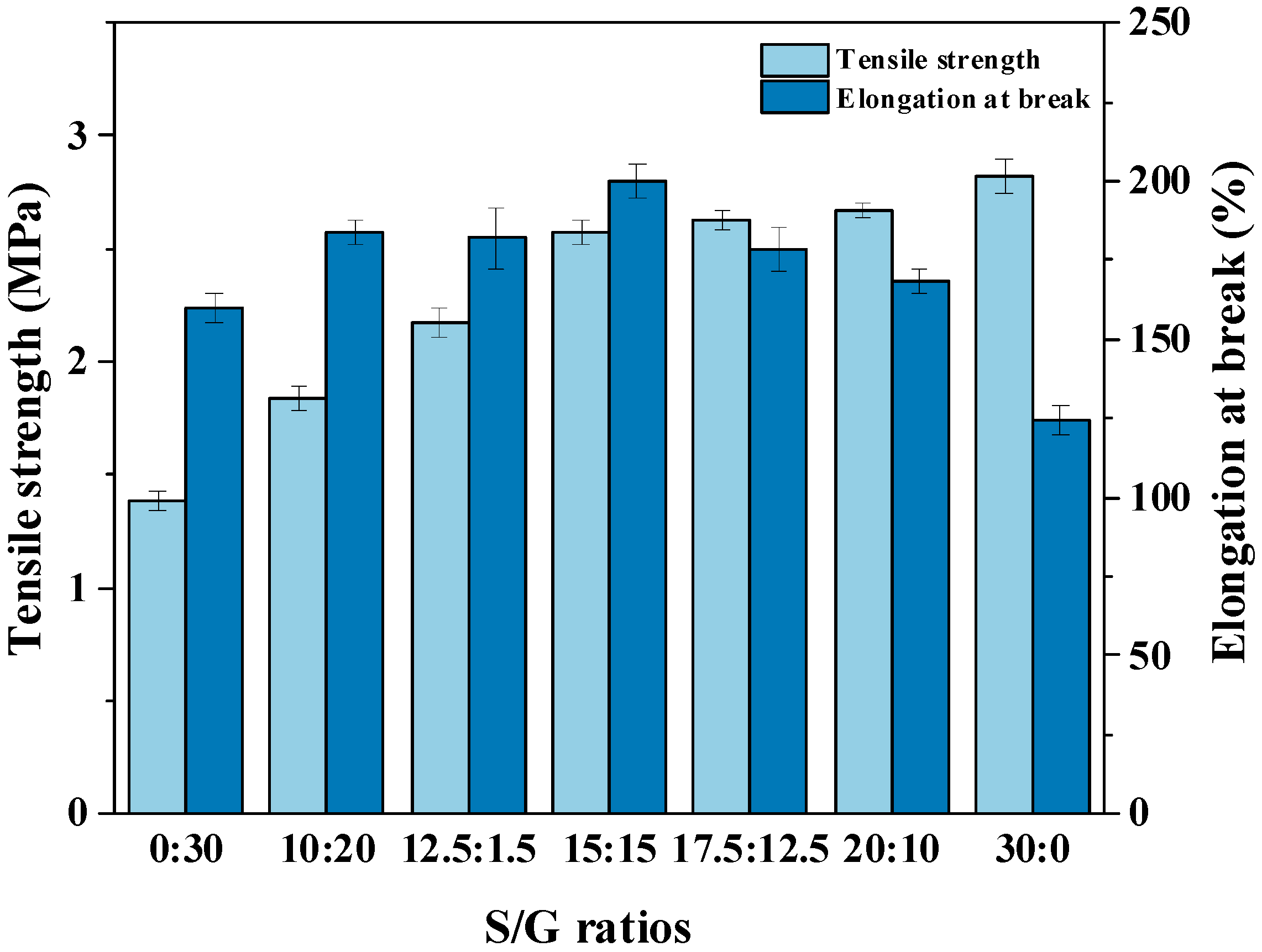
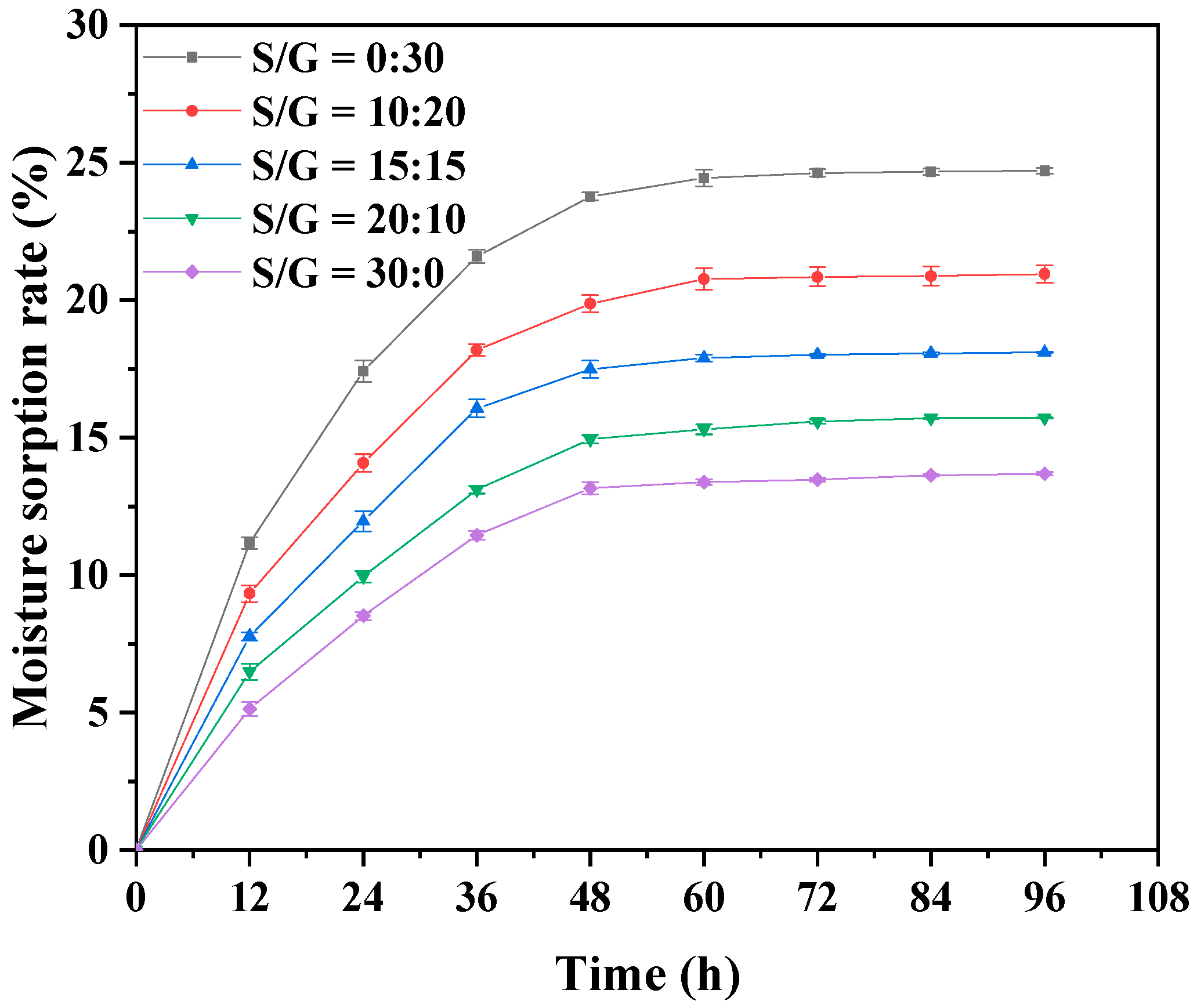
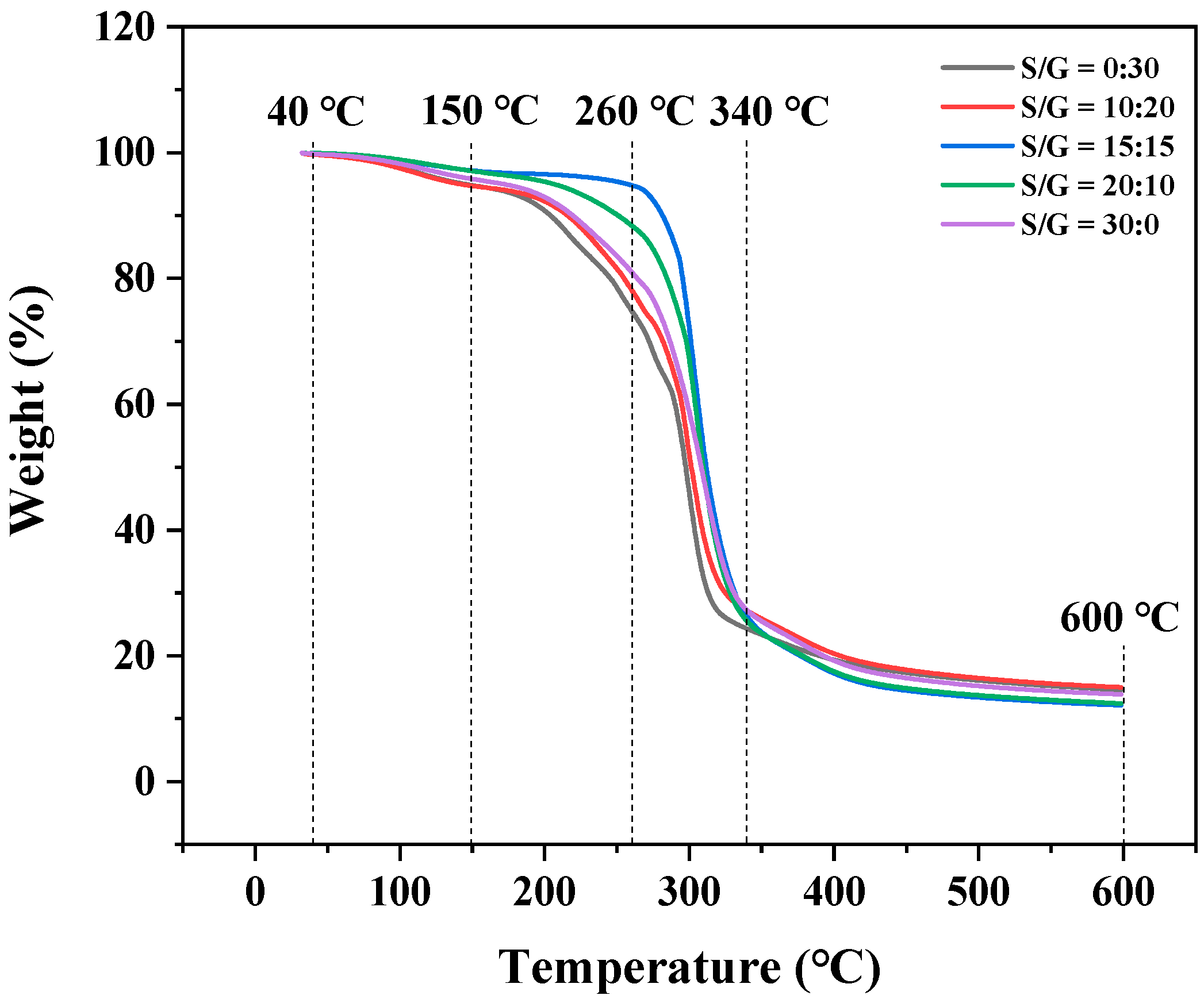
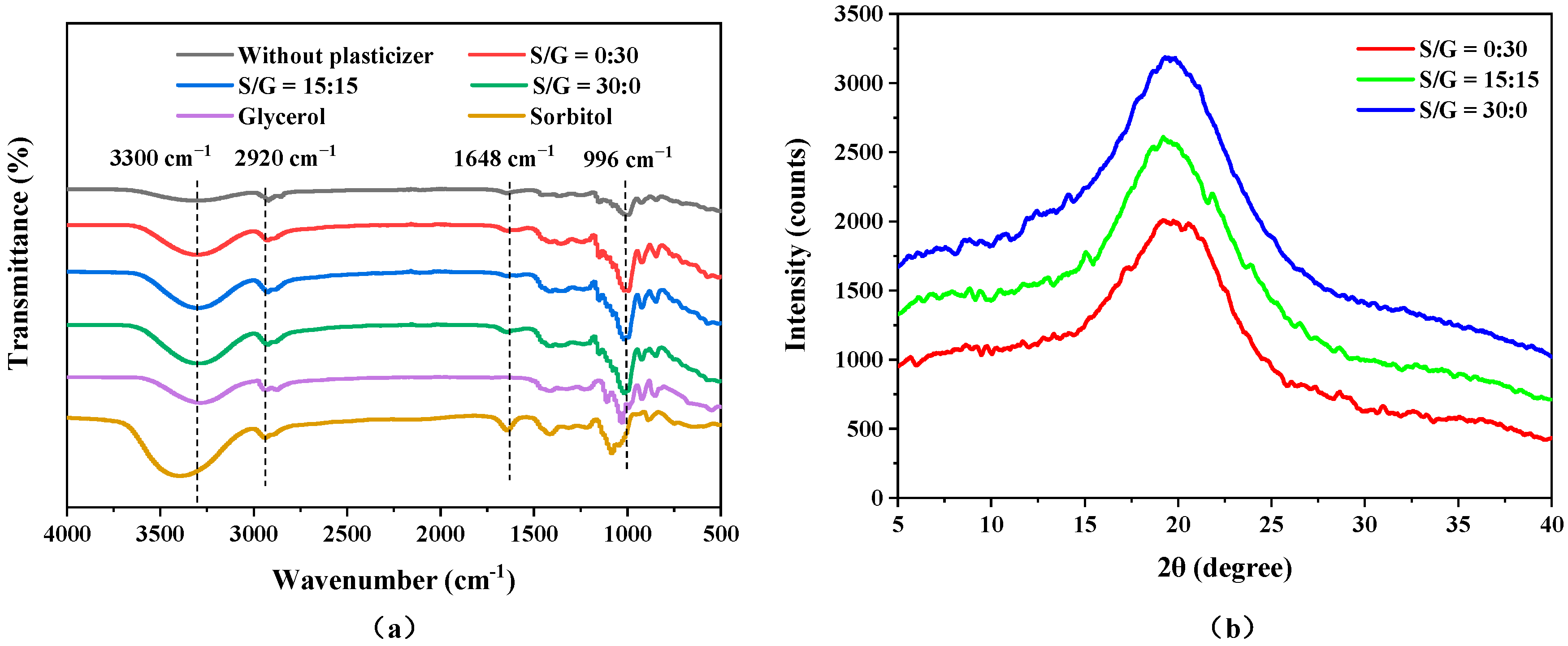
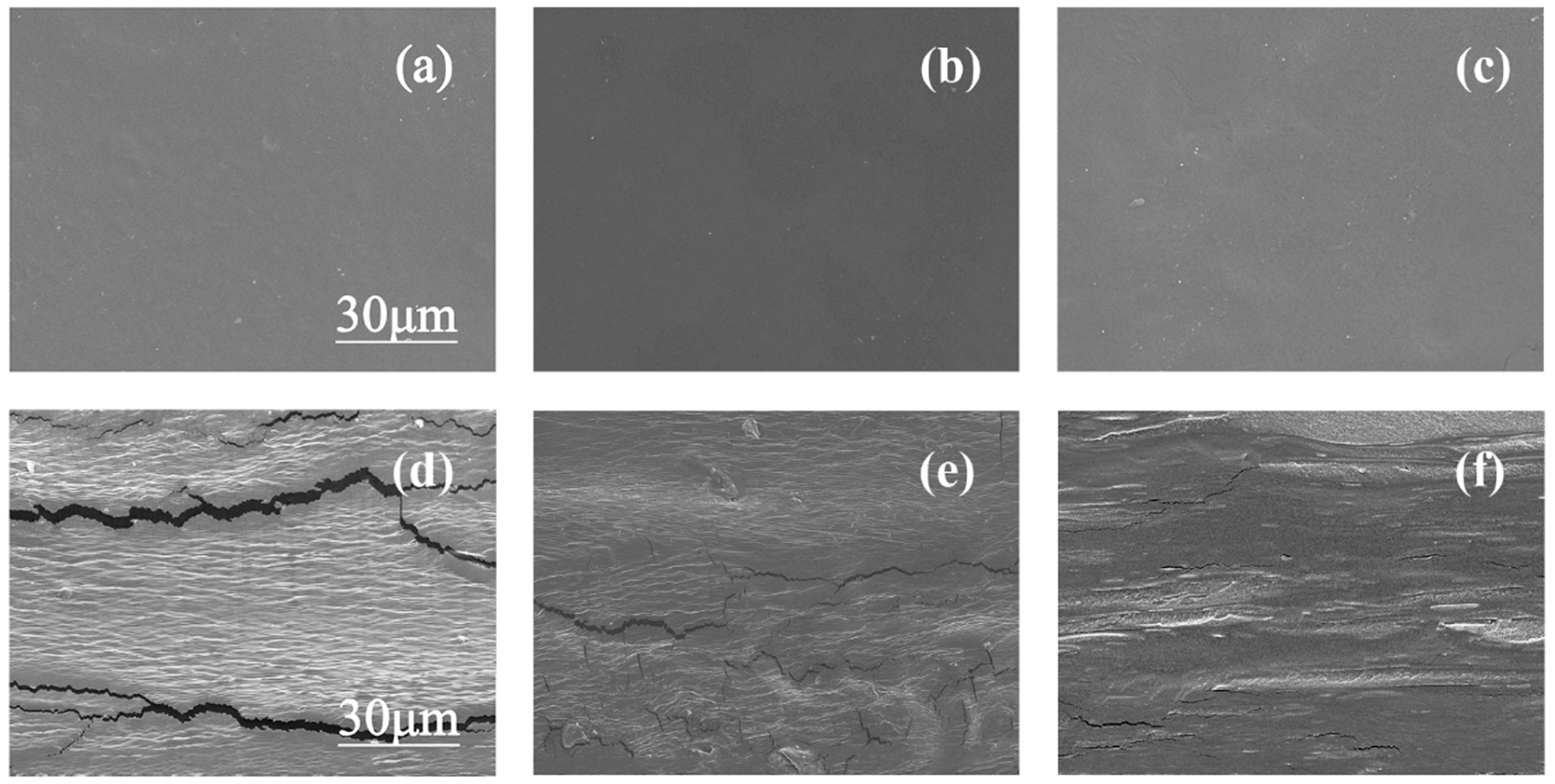
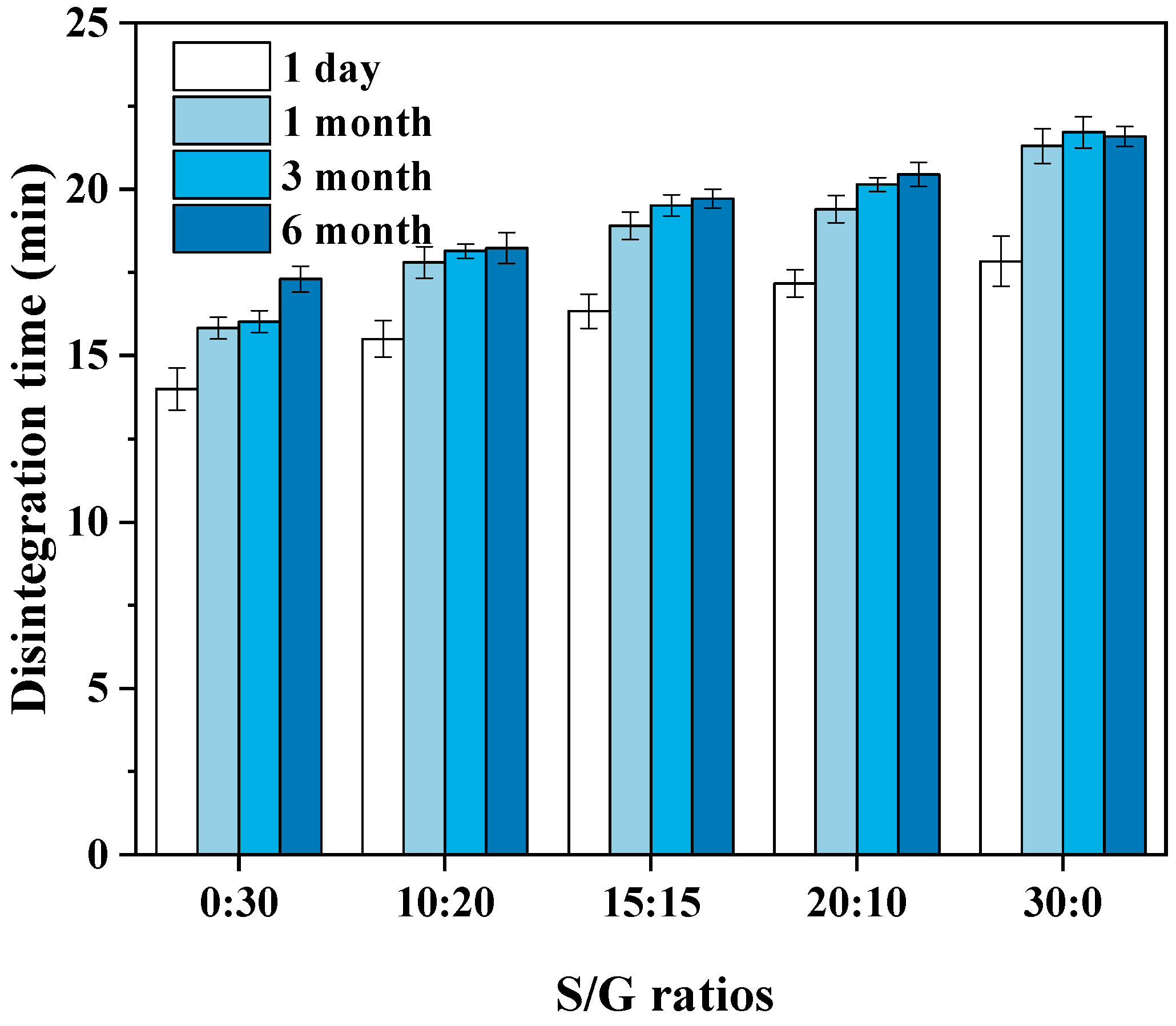

| S/G | 0:30 | 10:20 | 15:15 | 20:10 | 30:0 |
|---|---|---|---|---|---|
| WVP/*10−12 g·cm·cm−2·s−1·Pa−1 | 8.95 ± 0.30 | 6.47 ± 0.15 | 4.03 ± 0.21 | 2.68 ± 0.28 | 1.79 ± 0.17 |
Disclaimer/Publisher’s Note: The statements, opinions and data contained in all publications are solely those of the individual author(s) and contributor(s) and not of MDPI and/or the editor(s). MDPI and/or the editor(s) disclaim responsibility for any injury to people or property resulting from any ideas, methods, instructions or products referred to in the content. |
© 2023 by the authors. Licensee MDPI, Basel, Switzerland. This article is an open access article distributed under the terms and conditions of the Creative Commons Attribution (CC BY) license (https://creativecommons.org/licenses/by/4.0/).
Share and Cite
Zhou, K.; Yang, Y.; Zheng, B.; Yu, Q.; Huang, Y.; Zhang, N.; Rama, S.M.; Zhang, X.; Ye, J.; Xiao, M. Enhancing Pullulan Soft Capsules with a Mixture of Glycerol and Sorbitol Plasticizers: A Multi-Dimensional Study. Polymers 2023, 15, 2247. https://doi.org/10.3390/polym15102247
Zhou K, Yang Y, Zheng B, Yu Q, Huang Y, Zhang N, Rama SM, Zhang X, Ye J, Xiao M. Enhancing Pullulan Soft Capsules with a Mixture of Glycerol and Sorbitol Plasticizers: A Multi-Dimensional Study. Polymers. 2023; 15(10):2247. https://doi.org/10.3390/polym15102247
Chicago/Turabian StyleZhou, Kecheng, Yucheng Yang, Bingde Zheng, Qiqi Yu, Yayan Huang, Na Zhang, Shriram Mourougane Rama, Xueqin Zhang, Jing Ye, and Meitian Xiao. 2023. "Enhancing Pullulan Soft Capsules with a Mixture of Glycerol and Sorbitol Plasticizers: A Multi-Dimensional Study" Polymers 15, no. 10: 2247. https://doi.org/10.3390/polym15102247
APA StyleZhou, K., Yang, Y., Zheng, B., Yu, Q., Huang, Y., Zhang, N., Rama, S. M., Zhang, X., Ye, J., & Xiao, M. (2023). Enhancing Pullulan Soft Capsules with a Mixture of Glycerol and Sorbitol Plasticizers: A Multi-Dimensional Study. Polymers, 15(10), 2247. https://doi.org/10.3390/polym15102247







